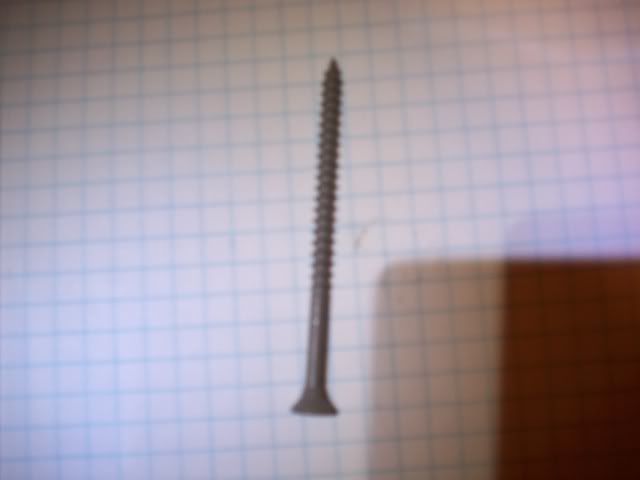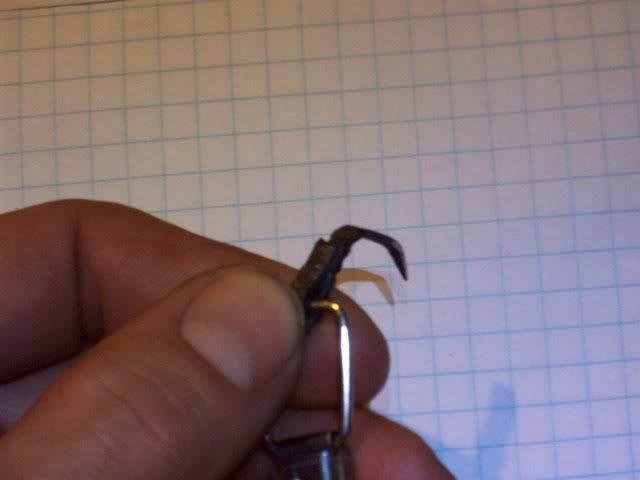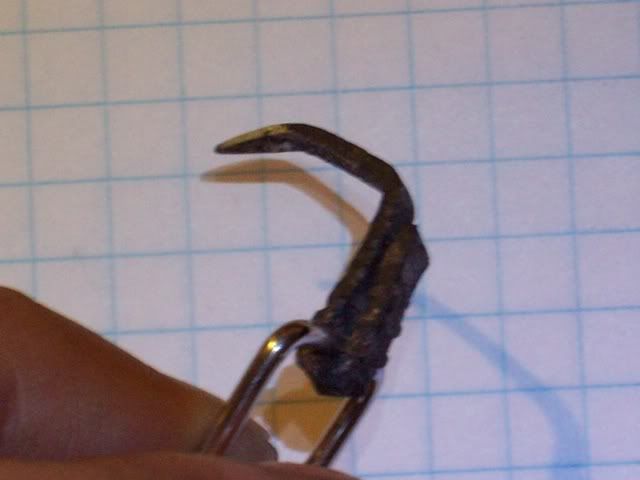Old 5/32" round file steel. I spun them in the drill with some grinding stones and emery cloth until the riffles were ground off smooth and then kept going finer with the sandpaper to polish them a bit - I left the riffles on the section that would be inserted into the handle though. Because of the twist in the riffles you can pretty much thread it in to a well-matched hole and it holds very well. I don't really know much about tempering and hardening steel though, so I can't speak for the durability and strength of the hook - it is sharp as a needle though! It doesn't get used much anyway and actually will likely end up with my fly-tying tools so I'm not really worried about it. I do have a couple small books about blacksmithing small hand tools like this, so it's just a matter of getting into it a bit more and remembering what I've read. My various torches do fine for heating pieces of this size but I have been on the lookout for something good to salvage to build a small forge out of. I have a few small blower fans to choose from to feed one with, so it's just a matter of finding some kind of old basin etc. to use and then getting some time to devote to it.
That's what I thought you made them out of. . . I saw part of the teeth sticking out of the handle, but wanted to ask to make sure. If you want help with hardening and tempering, just ask.
I made a nail for my 50' Spencer tape yesterday. . . I didn't have any horseshoe nails handy, and wanted to try something different anyway.
I took a deck screw ( I knew it was hardened) and heated it up to an orange (this baked off the paint and inner galvanizing I didn't know was there). Even though I didn't know what type of alloy it was, it doesn't stop me from experimenting with it to see what can be done.
I annealed it and began pounding out the shape I wanted. You can still see the screw 'bumps' where it connects to the tape. After two hardening quenches, they both proved that it got hard, but not quite as hard as a file, but good enough for my purpose. I probably could have left it 'as-quenched', but tempered it just to avoid any brittleness.
Once hardened in a bucket of water, I immediately cleaned up the tip with a file, which made the tip how I wanted it, and also exposed shiny metal to watch the color during temper. I wanted the portion that was to be bent over the tape-loop to be soft, and the hook to be hard.
I ran the color from the bent portion toward the hook. . . I tempered to a greyish-black on the bend and let it run out to a blue on the hook. A quick dip in the water cooled her off.
The results were the portion I wanted to bend is pliable but not weak, and the hook was as hard as I'll ever need it to be, but retains flexibility.
Overkill for a dumb tape hook? . . Yup. Fun to do anyway, and it only took a few minutes? . . Absolutely.











